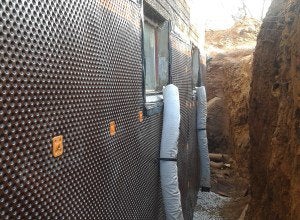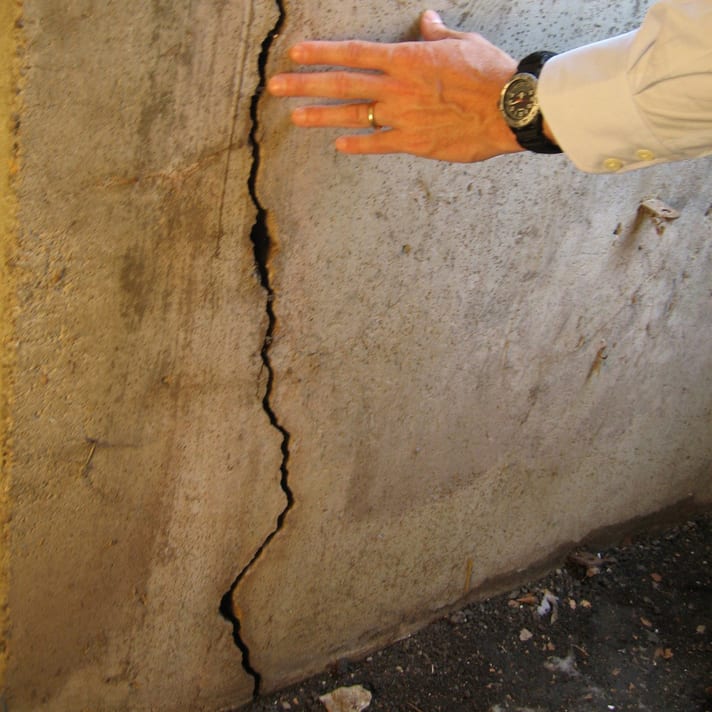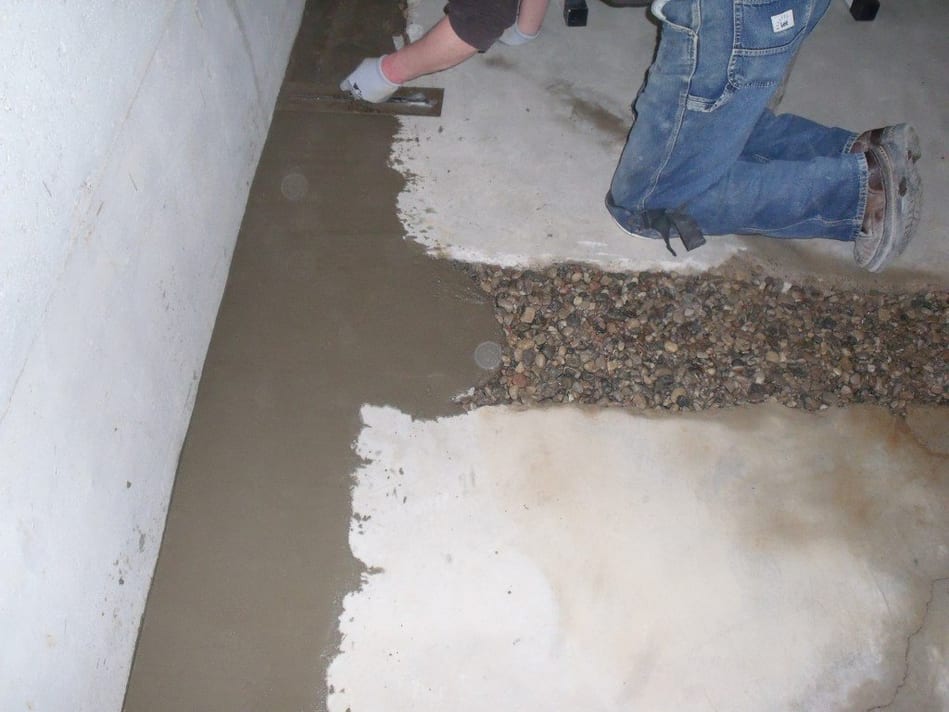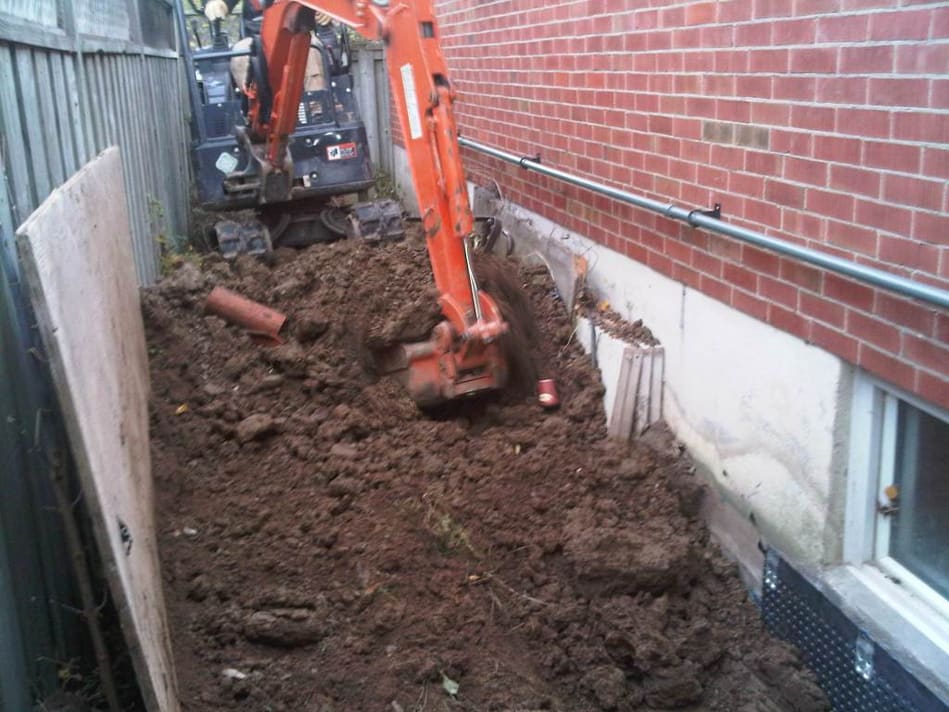-
Is Interior Waterproofing Different from Exterior Waterproofing?
Is Interior Waterproofing Different from Exterior Waterproofing?
As a homeowner, the state of your home is important to you. Not only because it’s a big financial investment, but also because it is your home. Remember how excited you were the day you signed on the dotted line and received your keys? Why wouldn’t you put in the time and effort to make sure your home is in nearly perfect condition?
If you live in an area prone to heavy rainfall, snowstorms and heavy snow melts, then you are aware of the damage this kind of weather can bring to your home and your basement. Being the responsible homeowner that you are, you have decided to invest in basement waterproofing for your home. But there are so many options to choose from and there are various methods of basement waterproofing to think about. You also have to think about hiring a professional to do the job for you. And honestly, is interior waterproofing different from exterior waterproofing? Well, let’s find out shall we?
The Difference Between Interior and Exterior Waterproofing
Exterior Waterproofing
Exterior waterproofing is the first defense against water and consists of gutters and downspouts that collect water and lead it away from your home. This is why it is so important to always keep your gutters clean. Another important part of exterior waterproofing includes a waterproof membrane, which is installed around the foundation of your home to seal out moisture so that the concrete doesn’t absorb it, crack and allow leaks. Next is an exterior drainage system, like a French drain. This system can require some work because it requires excavation along the foundation of the home.

Drain tiles are fitted into the trench around the home, surrounded by gravel and then the entire system is covered with soil. The drain tiles will carry water away from the foundation before it has a chance to enter the basement. Although this method does involve some excavation, it can be well worth it.
Exterior waterproofing is also more expensive than interior waterproofing, because it requires more work and more material, but it efficiently stops water from getting close to the foundation of your home. When your foundation stays dry, it doesn’t get weak and damaged and it won’t crack to allow water leaks inside your basement or your home. So in turn, a pricy exterior waterproofing system ends up being reasonable, because it saves you money in the long run.
Interior Waterproofing
Interior waterproofing makes sure that water that leaks into the basement is re-routed out and away from the home. These interior drainage systems are made up of pipes and drains that catch leaks or are installed under the foundation to collect excess groundwater. This excess water is directed to a sump pit, which is basically a large basin that stores water in your basement. Then comes a sump pump, which is a water pump that sits inside the sump pit and pumps water out of the basement and away from your home. Sump pumps usually begin automatically pumping water when it reaches a certain level in the sump pit. Most sump pumps come with a back-up battery so they can continue working in case of a power outage or during a severe storm.
Another method of interior waterproofing is made up of vapor barriers. These are made up of plastic or foil sheets and are installed along the walls of your basement to seal out moisture. Apart from an interior drainage system, interior waterproofing also works to seal any cracks and leaks that are letting water into the basement. These can easily be sealed so that they don’t allow any moisture or humidity to accumulate in your home. Investing in a good interior waterproofing system can greatly reduce the risk of a flood in your basement. These drainage systems are easy to install and generally cost less than exterior waterproofing systems.
Interior and exterior waterproofing both have their pros and cons. Interior waterproofing can only be used to remove water that has already accumulated in your basement, so they are not effective at preventing water from coming getting into the basement in the first place. Exterior waterproofing can be expensive, but it keeps water away from your foundation and from getting inside your home or into your basement. Regardless of the method you decide on, what’s important is that you are making the effort to keep your home warm and dry. If you have any questions about waterproofing methods, or if you are interested in interior and exterior waterproofing for your home, contact the experts at Triad Basement Waterproofing for more information.
-
What Causes Concrete Foundation Cracks?
What Causes Concrete Foundation Cracks?
Although our homes are built to be resilient to many things, after some time they tend to wear down. In the same way we show signs of age through wrinkles, our homes show it through imperfections and cracks. With the flaws of imperfect construction, pressure surrounding the home and the weight of the house bearing down on it, the foundation of your home takes it all. When it comes to foundation cracks or repairs, the important thing is to take care of the issue as soon as possible. It’s not a good idea to forget about it and wait until the crack gets bigger and allows water to leak into your basement and flood your home.
All concrete has the tendency to crack and there is no way to produce crack-free concrete. Concrete expands and shrinks with changes in temperature and moisture and this can cause cracking early on. Often concrete foundation cracks are not detected until long after they’ve formed. Regardless of how long the crack has been there, it tends to concern homeowners and they worry about the imperfection.
Cracks in concrete foundation most often appear at weak points like corners, basement window frames, walls and pipe areas. It’s important to keep track of these cracks and notice if they are getting bigger. It’s also important to understand why the crack showed up in the first place. What causes concrete foundation cracks? Read on to find out!

Top Causes of Concrete Foundation Cracks
Drought or too much moisture
Soil shrinks like a sponge when moisture is removed from it and when that happens it pulls away from the foundation of your home creating a gap. This gap allows for the foundation to move. When the foundation of a home is not supported properly it can shift around and cracks will begin to appear. In turn, if there is too much moisture it will cause the soil that is supporting the foundation of your home to expand.
Earthquakes
When an earthquake occurs it causes the ground to shake, which in turn shakes your home around. Thankfully not too many earthquakes occur on this side of the U.S., however even the tiniest of quivers can be an issue. Remember, if the foundation isn’t supported or stable, it can move around, weaken and crack. A small earthquake may not cause new cracks, but it can intensify ones that are already present.
Storms
Whether you experience a hurricane, a nor’easter or just a typical rainstorm these storms produce a lot of water, which can damage the foundation of your home. Too much water will force the soil around the foundation of your home to expand, which will push up against the home and cause concrete foundation cracks. Storms can also cause various other structural problems if you don’t take preventive measures to secure your home. One of the most popular explanations behind concrete foundation cracks is the freeze and thaw cycle during the winter. Concrete freezes at around 18 degrees and then it melts at around 35 degrees, which is when the cracking develops.
Plumbing Leaks
It’s important to make sure your pipes are secured and aren’t leaking and that you don’t have any plumbing leaks in your home. If you’re home isn’t equipped with basement waterproofing or a sump pump, the excess water will add to the soil causing it to expand and push against your foundation.
Flooding
Regardless of whether the flooding comes from a storm, a leak, inadequate drainage or something else, too much water will be a problem for your concrete foundation. When hydrostatic pressure becomes too much for the foundation of your home you will notice more leaks, more cracks and more problems.
Extreme Heat
Concrete can also crack under extreme sun and heat because it causes the concrete to expand. During the day and under the sun the concrete will expand, and then overnight the concrete will shrink and retreat back to its original unbaked position.
Get Help Fixing Your Cracks
The moral of the story is that it is important to keep your foundation stable, dry and supported.
When your foundation has wiggle room due to dry soil or if it’s tightly pushed in by expanding soil, these movements cause it to weaken and in turn create concrete foundation cracks. The good news is that concrete foundation cracks that are a result of too much moisture and flooding can be prevented through various methods of basement waterproofing.
It’s also not too difficult to repair concrete foundation cracks with epoxy injections. If you are thinking about preventive measures or you need concrete repair, then contact the team at Triad Basement Waterproofing and they will create a custom solution to your specific situation.
-
Top 3 Methods of Basement Waterproofing
Top 3 Methods of Basement Waterproofing
Are you suffering from a wet basement? Or are you looking for precautionary measures to help prevent basement flooding in your home?
Regardless of the motivation, it’s a good idea to invest in basement waterproofing for your home so you can protect what is yours, prevent any damages as well as save money instead of spending it on fixing a ruined basement or replacing damaged belongings.
If you are trying to figure out a way to cure a wet basement, or how to prevent one from happening then you are probably curious about the products and methods behind basement waterproofing. It is possible to dry out a basement and keep it that way with waterproofing, drainage and sealants, but you need to make sure you are choosing the right method, materials and contractors for your specific situation.
Each basement and situation is different so it is important to know where the moisture could potentially come in from and to create a comprehensive solution that is going to last. There are really only three methods to basement waterproofing – interior, exterior and drainage.
Let’s find out more about the top three methods of basement waterproofing .

Interior Sealants & Waterproofing
The most common entry point for water is through cracks in the concrete foundation. The good news is that these cracks can be easily sealed from the inside.
Special sealants are injected into the opening, penetrating through to the exterior where they seal the path off to potential moisture and leaks. These sealants usually last for a long time and come with long warranties. Although interior sealers are good for preventing leaks and humidity, they won’t work perfectly if there is strong hydrostatic pressure (water pressure) pushing against the foundation.
Using waterproof coatings on the inside of your basement is also a good idea. Concrete waterproofing coatings adhere permanently to concrete walls and work well where there is a minor dampness or condensation issue. Sealants and waterproof coatings cannot fix major leaks or basement floods.
Exterior Waterproofing
Exterior waterproofing helps to prevent water from entering your home to begin with so that the moisture doesn’t damage the foundation or the inside of your basement.
This method is accomplished by fully excavating around the home to the bottom of the foundation. Once that is done, the walls are sealed with a waterproof coating, which will waterproof the walls and direct water down to a drain system.
The drain can then be directed to a sump pump or down a slope that leads away from the foundation. This method will efficiently stop water from entering into your home and basement through the walls or through the foundation.
Interior & Exterior Drainage
If water did somehow make it into your home through a leak, then a proper drainage system is a great way to keep water under control. The easiest way to utilize drainage inside your basement is to have a sump pump that collects the water from inside and then pumps it out away from your home.
Interior drainage systems function by draining underground water from alongside the foundation of your home and then pump it away from the basement. These drainage systems should be prepared to work in case of a power outage, an overwhelming rainfall or heavy snowstorm and snow melt.
Water drainage is an efficient solution to keeping water out of your home and basement and they can also be airtight and used with vapor barriers to keep the area free from dangerous mold and mildew.

Which Method is the Best?
Nobody wants to come home to a flooded or leaky basement, so it is important to take preventive measures ahead of time and to be prepared in case a leak does occur.
There is no one best way to protect your home from leaks and moisture, because each situation is different. For some homes a coat or two of a waterproof sealant may be enough, while others may need a drainage system as well as a waterproof sealant.
When you work with Triad Basement Waterproofing, we will thoroughly analyze your basement, your foundation and your home and compose a unique solution to your issues. We not only waterproof your home, but we also make sure to relieve the water pressure from outside your home.
Apart from waterproofing your basement there are also other things you can do to help keep your home warm and dry.
Check out some of these tips to prevent a flooded basement.
We offer our professional services throughout Maryland, Pennsylvania, Virginia and Washington, DC. If you need basement help or you are thinking about basement waterproofing then contact our experts at Triad today!
